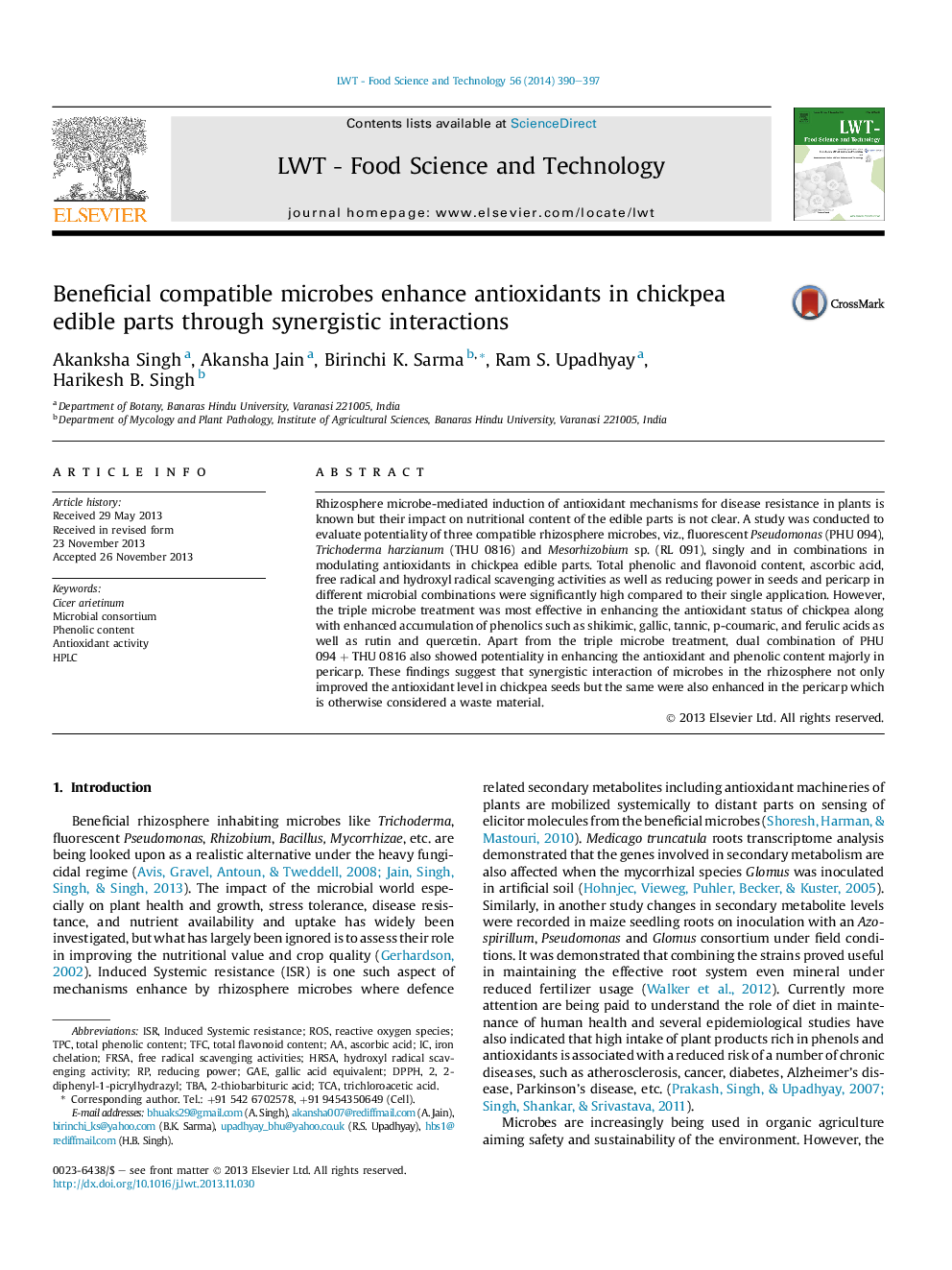| Article ID | Journal | Published Year | Pages | File Type |
|---|---|---|---|---|
| 6404325 | LWT - Food Science and Technology | 2014 | 8 Pages |
Abstract
Rhizosphere microbe-mediated induction of antioxidant mechanisms for disease resistance in plants is known but their impact on nutritional content of the edible parts is not clear. A study was conducted to evaluate potentiality of three compatible rhizosphere microbes, viz., fluorescent Pseudomonas (PHU 094), Trichoderma harzianum (THU 0816) and Mesorhizobium sp. (RL 091), singly and in combinations in modulating antioxidants in chickpea edible parts. Total phenolic and flavonoid content, ascorbic acid, free radical and hydroxyl radical scavenging activities as well as reducing power in seeds and pericarp in different microbial combinations were significantly high compared to their single application. However, the triple microbe treatment was most effective in enhancing the antioxidant status of chickpea along with enhanced accumulation of phenolics such as shikimic, gallic, tannic, p-coumaric, and ferulic acids as well as rutin and quercetin. Apart from the triple microbe treatment, dual combination of PHU 094Â +Â THU 0816 also showed potentiality in enhancing the antioxidant and phenolic content majorly in pericarp. These findings suggest that synergistic interaction of microbes in the rhizosphere not only improved the antioxidant level in chickpea seeds but the same were also enhanced in the pericarp which is otherwise considered a waste material.
Keywords
DPPHCicer arietinumISRTBAHRSAFRSATCATPCTFCGAE2-Thiobarbituric acid2, 2-diphenyl-1-picrylhydrazylROSAscorbic acidtrichloroacetic acidAntioxidant activityFree radical scavenging activitiesHydroxyl radical scavenging activityTotal phenolic contentPhenolic contentGallic acid equivalentInduced systemic resistanceTotal flavonoid contentReducing powerHPLCIron chelationMicrobial consortiumReactive oxygen species
Related Topics
Life Sciences
Agricultural and Biological Sciences
Food Science
Authors
Akanksha Singh, Akansha Jain, Birinchi K. Sarma, Ram S. Upadhyay, Harikesh B. Singh,
